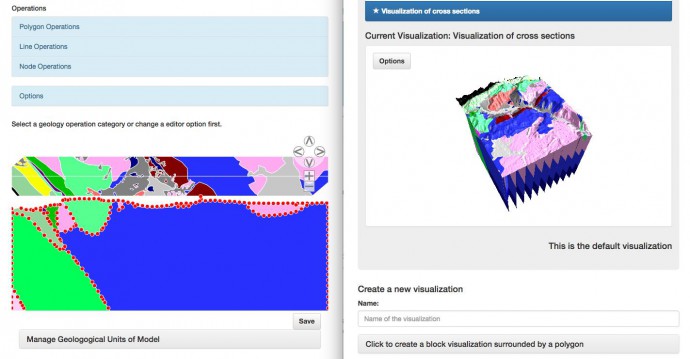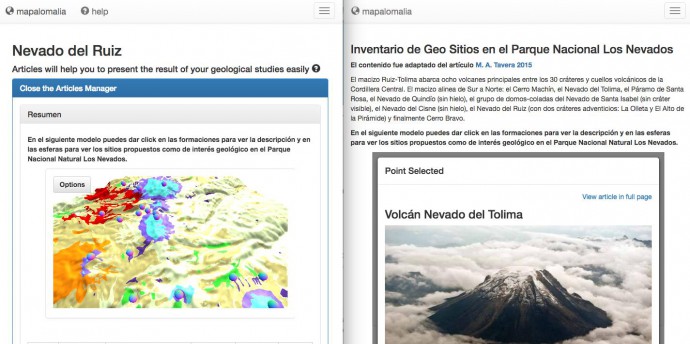I have released mapalomalia, (which may or might not mean model of the Earth), the first fully web based geological modeling platform. I hope it can serve the community of geologists to build models that can help us understand our planet and face the ever-increasing challenges that humanity faces.
I’m Ricardo Serrano, you can reach me @rserrano0 on Twitter or via rserrano@mapalomalia.com. This is the first time I announce this in a well-recognized Blog and I thank Christoph Gruetzner for the opportunity. But let’s move forward to what you were waiting for. What can I do today with mapalomalia?
You just need a modern browser and go to mapalomalia.com. Even from a phone or a tablet mapalomalia can be used easily.
With mapalomalia you can:
- Edit or create geological maps that are always geological: with mapalomalia you can upload and edit geological maps easily. You can use maps from ESRI® shapefiles or Google® KMLs, but you can also build maps from scratch using mapalomalia’s editing capabilities.
 With mapalomalia the maps have always a good topology, they are always geological. You don’t have to check and fix the topology after you create them because the operations will always result in a good topology and will be way simpler. You will feel it like drawing on paper.
With mapalomalia the maps have always a good topology, they are always geological. You don’t have to check and fix the topology after you create them because the operations will always result in a good topology and will be way simpler. You will feel it like drawing on paper. - Create cross sections easily: you just need a Digital Elevation Model and mapalomalia will draw profiles for you. You can start drawing faults and formations for your cross section. You can use the top map as a reference or any georeferenced image and data you have.
 But most importantly, Mapalomalia helps you to draw new cross sections using an interpolation algorithm that always produces an editable cross section that has good topology. It doesn’t matter if you have a perfect equal topology and almost equal geometry, as most commercial programs require, or a topology that is disparate and does not correlate well with the next cross section. You can use the interpolation, fix what your data or gut tells you and then interpolate again until you have enough cross sections to perfectly describe the geology.
But most importantly, Mapalomalia helps you to draw new cross sections using an interpolation algorithm that always produces an editable cross section that has good topology. It doesn’t matter if you have a perfect equal topology and almost equal geometry, as most commercial programs require, or a topology that is disparate and does not correlate well with the next cross section. You can use the interpolation, fix what your data or gut tells you and then interpolate again until you have enough cross sections to perfectly describe the geology. - Create amazing visualizations:A visualization of your work will be always there for you, to show you all the cross sections and the map with the topography. You can browse it, exaggerate the topography, and add information to it, making it completely interactive.

- Create documents of your work with embedded information: You can write documents in simple markdown and use the 3D visualizations or the 2D maps and cross sections in them. You can also easily link images, or even use HTML to insert frames from Sketchfab® or GigaPan®. You can also link documents through visualizations, referencing the information in your geological models.

And a lot more.
***********************
Thanks Ricardo for that great tool!



No Comments
No comments yet.